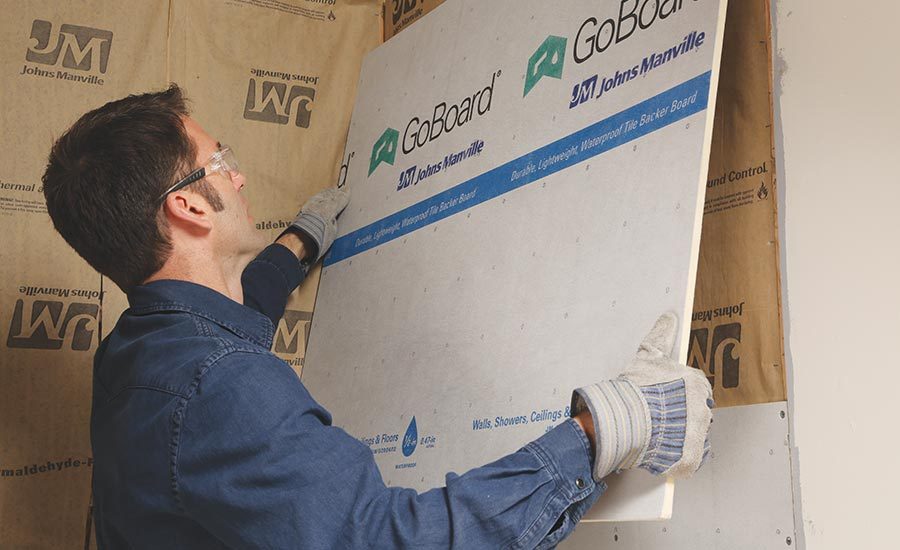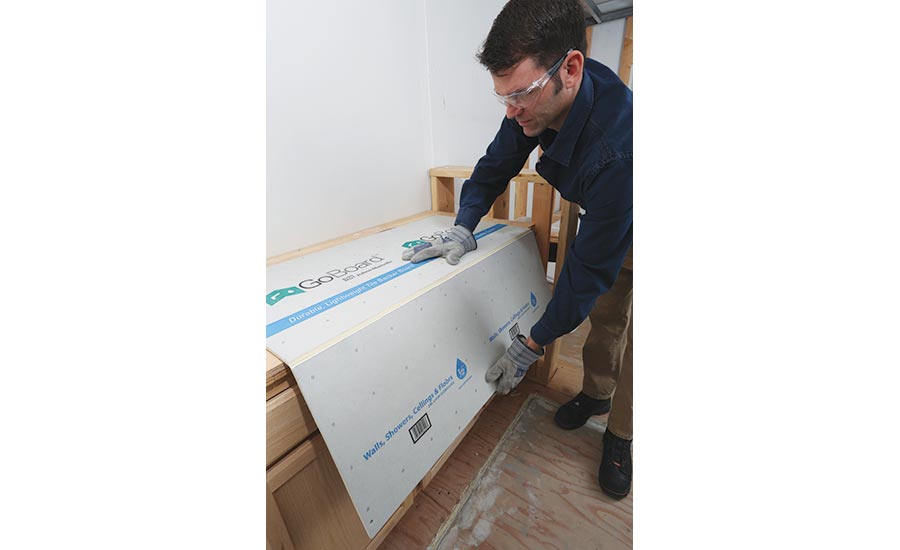Technical Focus: Moving Beyond the Traditional Tile Backer Board

In the current landscape, cement tile backer boards are still the most widely used as they are low cost, and provide exceptional hardness, stiffness, water and mold resistance, dimensional stability, and compatibility. As we look at the future of tile backer boards, it’s time to consider alternative options with waterproof built-in.
Photos courtesy of Johns Manville

Photos courtesy of Johns Manville


In today’s market, tile installers have numerous options when looking for tile backer boards — cement, gypsum, magnesium, as well as drywall plaster board or wood products — each with its own set of features and benefits. With a two host of recent industry issues, including the tightening of labor markets, issues associated with moisture intrusion into wall cavities, heightened awareness of mold-related health problems, and a need for increased productivity at the jobsite, lightweight and waterproof foam tile backer boards are serving as a well-suited solution for projects in the U.S. and Canada. To meet these changing demands, companies must modify their approach and offer new products aimed at solving these problems for installers.
In the current landscape, cement tile backer boards are still the most widely used as they are low cost, and provide exceptional hardness, stiffness, water and mold resistance, dimensional stability, and compatibility. Despite being water- and mold-resistant, if not properly waterproofed, cement boards absorb water and, overtime, allow water to migrate into underlying subfloors and wood framing, which can result in mold growth and rot. Cement boards are also very heavy, abrasive and dusty, and require additional time and resources for transporting, cutting and installing. Despite these disadvantages and lack of waterproofing, many tile installers continue to use cement backer boards as they are a cost-effective solution when waterproofing is not required.
Glass mat-faced or fiber-reinforced gypsum also tends to be heavy, hard and rigid, some with added water and mold resistance. As with cement, however, gypsum boards require additional waterproofing for bathroom and wet area applications and tend to be difficult to install. Other options like the recently introduced magnesium oxide (MgO) and foam composite backer boards offer advantages, but at the end of the day, don’t always address waterproofing issues and have limited use.
Traditional drywall, plaster board and wood products like flakeboard and plywood are not suitable substrates for tiling applications on their own, especially in wet areas where water can penetrate through grout joints. Over time, water accumulation underneath the tile installation can damage substrates that are not water- and mold-resistant. In some cases, water can even penetrate wall and floor assemblies causing further damage to structural members in the affected areas. Likewise, standard drywall can disintegrate over time when exposed to water.
When installed properly, water- and mold-resistant tile backer boards prevent these problems from occurring and significantly extend the service life of the tile installation. This is especially true for wet areas like bathrooms, kitchens, floors and exterior applications.
As we look at the future of tile backer boards, it’s time to consider alternative options with waterproof built-in. Waterproofing is one of the most important steps of the installation process and is critical in combatting mold growth and preventing exterior damage. For example, in wet areas like bathrooms, kitchens and mudrooms, a waterproof tiling substrate should be considered to ensure moisture intrusion does not compromise the tile installation and underlying structure.
When waterproofing is necessary, the installer should consider the cost of the complete installation, including the tile underlayment board, membrane, additional tools and labor, and whether the system should be ANSI A118.10 compliant. This standard includes a series of rigorous test methods and requirements that define a waterproof underlayment for use with porcelain, ceramic and natural stone tiles. There are many sheet-and liquid-applied membrane options available that will make any rigid board ANSI 118.10 compliant, but few rigid boards that meet ANSI 118.10 requirements without additional waterproofing.
Most tile backer boards are not waterproof and require the waterproof membrane to be installed underneath or on top of the board. When installed incorrectly or skipped altogether, the structure is at risk for exterior damage and a shorter lifecycle. When looking to reduce costs and save time, installers can look to foam tile backer boards with waterproof built-in like the Johns Manville GoBoard® available in the U.S. and the Johns Manville GoBoard® LT available in Canada. These boards are typically lighter in weight, but still feature high strength and durability. With waterproof built-in, the job does not require additional sheet or liquid waterproofing membranes to meet ANSI A118.10 requirements for waterproof tile installations. This allows tile installers to complete typical tile installations with less steps, simple tools and fewer materials, all contributing to a faster, lower-cost tile installation.
Unlike traditional tile products, these newer foam tile backer boards with waterproof built-in are engineered to maximize performance and value for the tile installer.
When choosing a tile backer board, installers need to consider many more factors beyond price. A lower-cost product does not always mean the best solution when other factors are considered — and waterproofing is becoming increasingly important. Looking ahead, we must think long-term and begin considering alternative backer board options that increase efficiencies, reduce the chances of mold growth and create a timelier installation process.
Looking for a reprint of this article?
From high-res PDFs to custom plaques, order your copy today!











